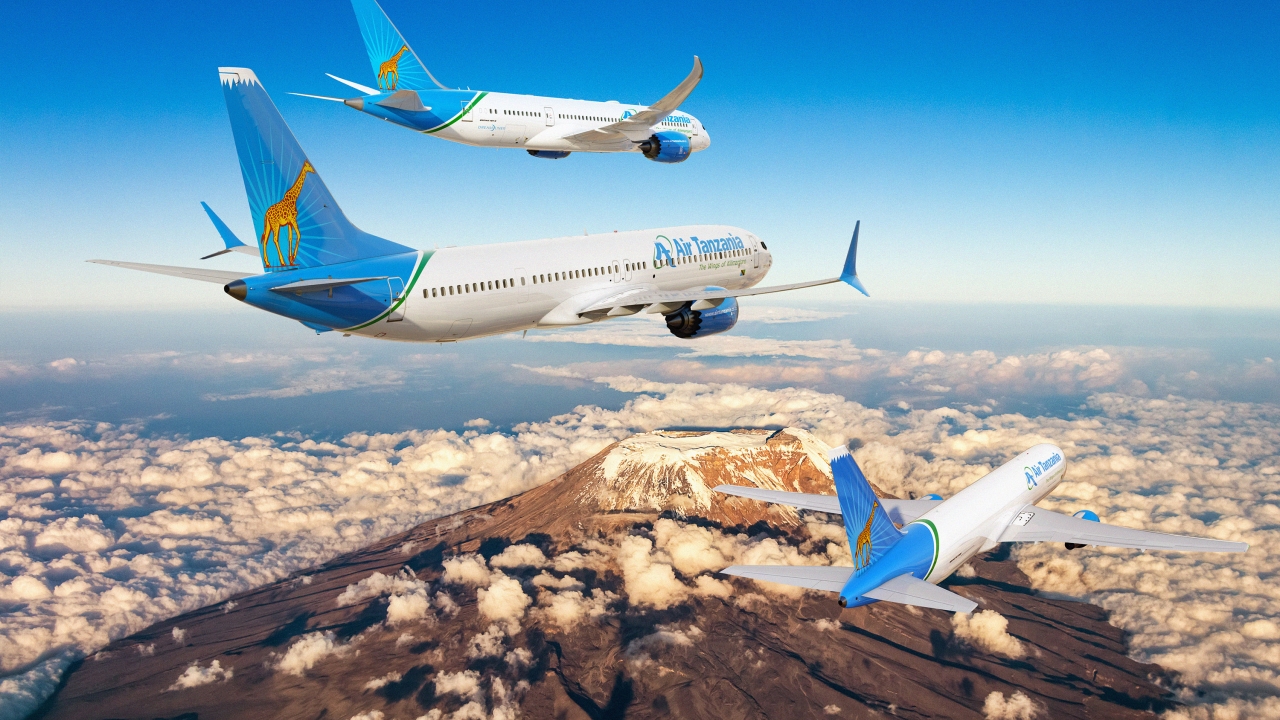Air Djibouti back from the dead
After a false start in 2015, Air Djibouti is now spreading its wings under the watchful eye of support specialists Cardiff Aviation. Martin Rivers talks to Ian Patrick, the flag-carrier's commercial director.

More than a decade after its previous incarnation was liquidated, Air Djibouti is back in the skies with one Boeing 737-400 and one BAe 146 wet-leased from VVB Aviation Malta and South Africa’s Fair Aviation respectively.
Another BAe 146 is due to arrive in February, while a 767-200ER, owned by the Djibouti Government, has been lined up for long-haul flights.
The flag-carrier was resurrected in August 2015 with a Fokker 27 freighter wet-leased from Kenya’s Astral Aviation, but promptly returned the turboprop after a series of maintenance issues.
Air Djibouti relies wholly on wet leasing due to restrictions placed on the Horn of Africa nation by the International Civil Aviation Organisation (ICAO), which deems the Djiboutian Civil Aviation Authority unfit to oversee operations. The full spectrum of the airline’s managerial, operational and technical activities has been contracted out to Cardiff Aviation, the support specialist founded by Iron Maiden singer Bruce Dickinson.
Although chairman Aboubaker Omar Hadi has disclosed a long-term vision of deploying 15 aircraft, commercial director Ian Patrick is taking things one step at a time during the start-up’s early days.
“I have to focus on the short-term at the moment. Once we are stable and operating well, then I will put in place a total commercial plan for 10 years,” he said. “We will have plans to expand in the future, but we’re going to establish ourselves regionally first.”
The 737 began serving Ethiopia’s capital, Addis Ababa, in August, followed two months later by BAe flights to Hargeisa and Berbera in Somaliland, the autonomous north-western province of Somalia. Patrick said the Hargeisa route is performing “incredibly well” despite competition from local rival Daallo Airlines.
Route-proving flights were also conducted to Somalia’s capital, Mogadishu, and the Puntland city of Bosaso in November, but at the time of writing no firm decision had been taken about launch dates. Although he said Mogadishu will “almost certainly be our biggest market”, Patrick is waiting for the completion of security assessments by both the Djiboutian authorities and Lance Black, the airline’s in-house security manager.
Concerns about air safety in Somalia have intensified since the bombing of Daallo Flight 159 in February 2016, which mercifully killed only the assailant. Mogadishu’s Aden Adde International Airport has also repeatedly been targeted in ground attacks by Al Shabaab, the Islamist terrorist group affiliated to Al Qaeda.
“We’re waiting on the assessments and then we’ll set a launch date once we get the all clear,” Patrick affirmed.
“[When that happens] we will increase frequencies and expand the network to do more criss-crossing of Somalia, Somaliland and back. The aircraft would go Djibouti-Bosaso-Mogadishu-Djibouti. And then the next day it would fly straight into Mogadishu and come back via Bosaso. We’d have the same linking [to Djibouti] for Hargeisa and for Berbera. And link Berbera-Hargeisa-Bosaso as well.”
Fifth-freedom flights stretching from Mogadishu to Nairobi, Kenya’s capital, are another possibility. But Kenyan restrictions that force inbound flights from Somalia to make an additional security stop in the northern town of Wajir pose a problem. “If you look at the crew hours, that extra stop really does make it difficult [to justify the route],” Patrick said. He voiced optimism that the Kenyan Government would change its policy soon.
Elsewhere, the Ethiopian city of Dire Dawa should have joined the network by the time African Aerospace goes to press, while negotiations continue over the addition of Dubai in the UAE and Jeddah in Saudi Arabia.
European connectivity is also being targeted in the form of the London-Paris-Djibouti route that Astraeus Airlines – a precursor to Cardiff Aviation – had operated for Daallo with a 757 during the last decade.
A 767-200ER, owned by the Djibouti Government (MSN 23624), is currently parked at St Athan airfield in South Wales, awaiting re-designation under Cardiff Aviation’s AOC before being based at London Gatwick Airport for the long-haul route – potentially as soon as this month.
“What we did years ago for Daallo Air was very successful and very popular,” said Tony Layfield, Air Djibouti’s chief pilot. “With a 767, it’s got even more potential. The 757 struggled with the range, particularly in the winter against the jet stream.”
Members of the Somali diaspora, who travel back to their homeland via Djibouti, currently have just two options from Europe: Air France and Turkish Airlines. Somalia, itself, does not have any non-stop links to the continent.
While he is upbeat about the prospects for passenger services, Patrick, nonetheless, expects freight to be the backbone of the flag-carrier in future years. The Djibouti Government has pledged to develop a combined sea and air freight hub in the country, exploiting its location by the Bab al-Mandab shipping lane that links the Red Sea with the Gulf of Aden.
“At the end of the day it’s freight that is going to be important,” he insisted, adding that 737Fs or BAe 146Fs will be inducted once the new cargo terminal opens at Djibouti-Ambouli International Airport. “The entire concept of sea-air [cargo] is what is going to drive the airline… getting the freight to the landlocked countries, getting it down to Mogadishu, getting it to Hargeisa – that is incredibly important for us.”
Rwanda, Chad, the Central African Republic, Sudan and South Sudan are among the candidates for freighter services. However, significant cargo growth may not be possible until successor gateway, El-Hajj Hassan Gouled Airport, opens around the turn of the decade.
Stay up to date
Subscribe to the free Times Aerospace newsletter and receive the latest content every week. We'll never share your email address.

